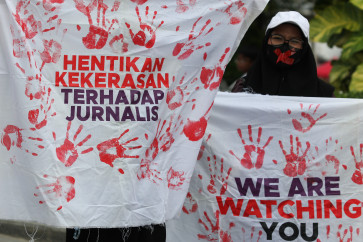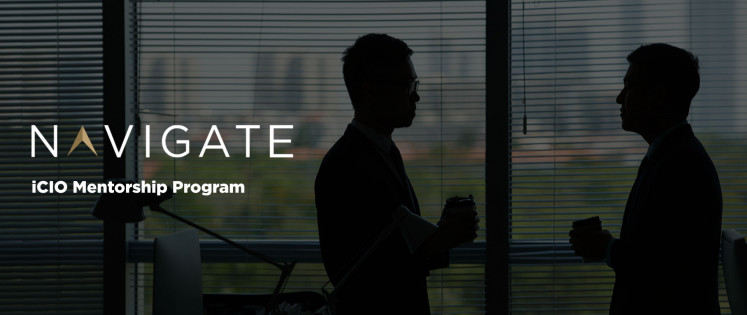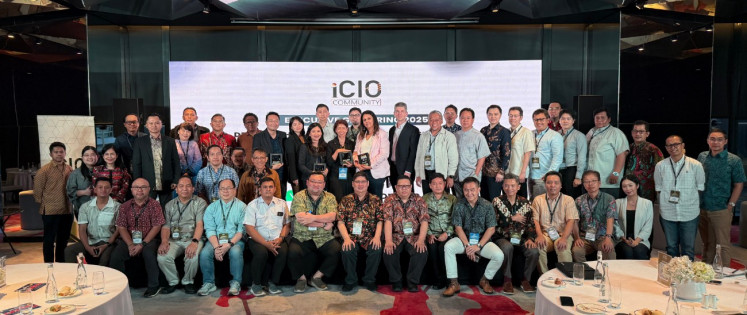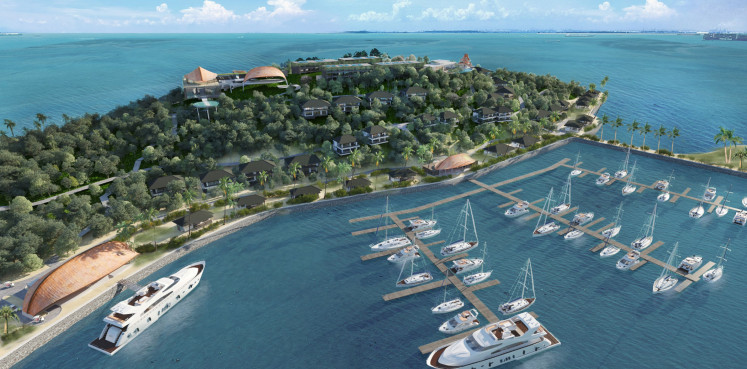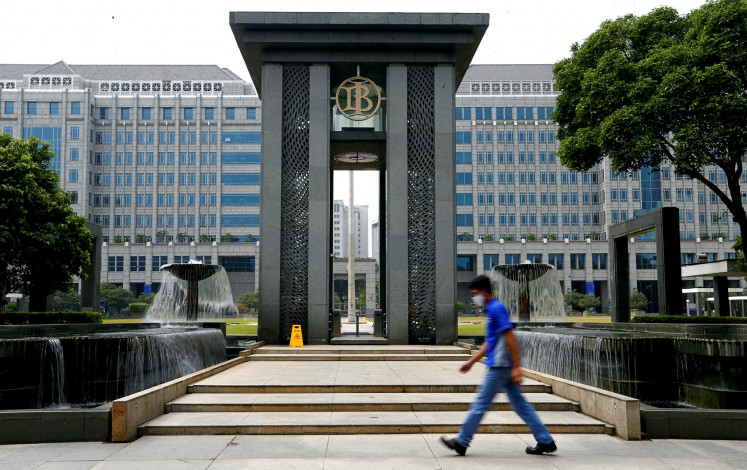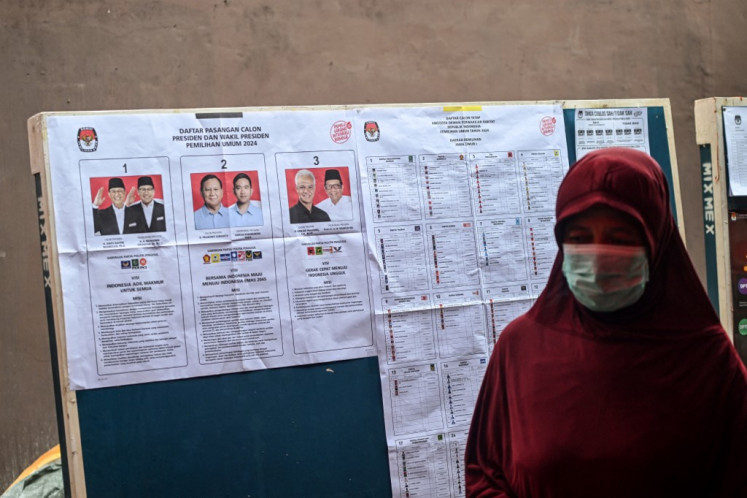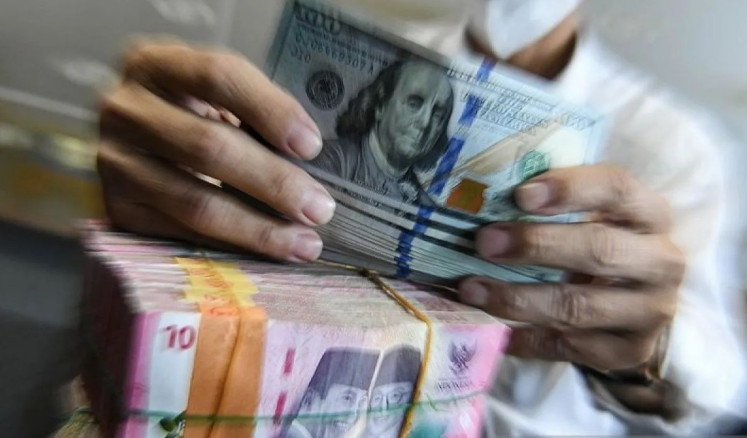Popular Reads
Top Results
Can't find what you're looking for?
View all search resultsPopular Reads
Top Results
Can't find what you're looking for?
View all search resultsBuilding Indonesia Global Networks
Building Indonesia Global NetworksRealizing Indonesia's strategic geographical location, state-owned telecommunication company PT Telekomunikasi Indonesia (Telkom), through its subsidiary PT Telekomunikasi Indonesia International (Telin), is embarking upon a mega project that will make Indonesia a global gateway for telecommunications traffic, connecting Europe and the west coast of the US
Change text size
Gift Premium Articles
to Anyone
Building Indonesia Global Networks
Realizing Indonesia's strategic geographical location, state-owned telecommunication company PT Telekomunikasi Indonesia (Telkom), through its subsidiary PT Telekomunikasi Indonesia International (Telin), is embarking upon a mega project that will make Indonesia a global gateway for telecommunications traffic, connecting Europe and the west coast of the US.
Telin specializes in international carrier services and strategic investment in international telecommunication business. It also serves as Telkom's business arm for managing and developing business abroad.
Telin is teaming up with other world-class operators to construct a submarine cable communications system through a consortium known as South East Asia - United States (SEA-US).
Earlier this year, Telin also signed a memorandum of understanding (MoU) with 12 Asian telecommunications companies and two European companies to form the Southeast Asia consortium - Middle East - Western Europe 5 (SEA-ME-WE) to develop an international submarine cable system linking Southeast Asia and Europe.
Lying at the heart of these two mega projects is the Indonesia Global Gateway, which will serve as the global hub linking the SEA-ME-WE and SEA-US networks.
The Indonesia Global Gateway (IGG) stretches from Dumai in Indonesia's western island of Sumatra to Manado in Indonesia's eastern island of Sulawesi. It is one of Telkom's proudest accomplishments and a proof of Telin's commitment to realizing its vision of becoming 'the world's hub for telecommunication, information, media, edutainment and services (TIMES)'.
The SEA-US consortium is Telin's third major submarine cable project. The consortium agreement was signed in Jakarta on Thursday, August 28, 2014 by Telin president Sharif Ahmed Syarial and other consortium representatives. The CEO of Telkom, Arief Yahya and Telkom's director of wholesale and international service Ririek Adriansyah also attended the event to mark the official start of the submarine cable installation project that will link five cities in five countries or territories; namely, Manado (Indonesia), Davao (Philippines), Piti (Guam), Oahu (Hawaii, US), and Los Angeles (California, US).
The consortium members comprised seven global telecommunications companies, namely PT Telekomunikasi Indonesia International (Telin), Telkom USA (a subsidiary of Telin), Globe Telecom, GTI Telecom, RAM Telecom International (RTI), Teleguam Holdings (GTA) and Hawaiian Telcom (Htel). The consortium will build the SEA-US submarine cable system, a 15,000 kilometer-long fiber optic cable that will stretch from Indonesia to America.
"Project SEA-US is the first submarine cable linking eastern Indonesia with the United States. It will be connected to Telkom's infrastructure and its marine cable system will be able to provide the lowest latency between Indonesia and the United States compared with the other international submarine cable systems already in place,' Arief said.
The SEA-US submarine cable has several advantages, such as relatively small barriers, even in congested traffic, lowest levels of latency, as the cables are located in volcano-free areas with minimal risk of natural disasters. This submarine cable communication system will provide stable connectivity and will be the sole submarine cable system linking Southeast Asia to the US that avoids the earthquake-prone areas in East Asia.
The project is expected to be completed by 2016 and begin operating immediately. It will be seamlessly integrated with other submarine cable systems that Telin has already developed, such as the SEA-ME-WE 5, Asia America Gateway (AAG), South East Asia Japan Cable System (SJC), Batam Singapore Cable System (BSCS), Dumai Malaka Cable System (DMSC), Thailand-Indonesia-Singapore (TIS) and other domestic wiring systems. This will allow for the creation of a comprehensive network configuration that connects Asia, Europe, the US and Indonesia with unsurpassed quality. It will be called Indonesia Global Networks.
The project calls for $242 million investment, toward which Telin will contribute around 30 percent. The project will provide additional capacity of 20TB/sec, connecting Indonesia and the Philippines to the United States using 100G technologies; timely and appropriate given the fact that telecommunications traffic to the US is among the top three destinations of Indonesia's traffic profile. With this much capacity, Indonesia is expected to accommodate high demand for bandwidth to connect the two continents.
This undersea cable system is part of Telin's contribution to supporting the success of Indonesia's Acceleration and Expansion of Economy Development Master Plan (MPE3I) and is additional proof of Arief's new, paradoxical business approach to conquering the increasingly complex market, which he coined as 'paradox marketing'. The marketing strategy makes use of the opposing polarities of product, price, place and promotion and is based on six concepts; namely, value equation, providing more-for-less, polarity management, Blue Ocean strategy, buyer-as-seller and starting from the end.
Telin's successful international expansion can also be credited to Arief's approach in leading the country's biggest telecommunications operator, the company's corporate philosophy, leadership architecture and culture for sustainable growth. These three elements are reflections of the hard and soft organizational aspects that complement each other; great spirit and grand strategy.




